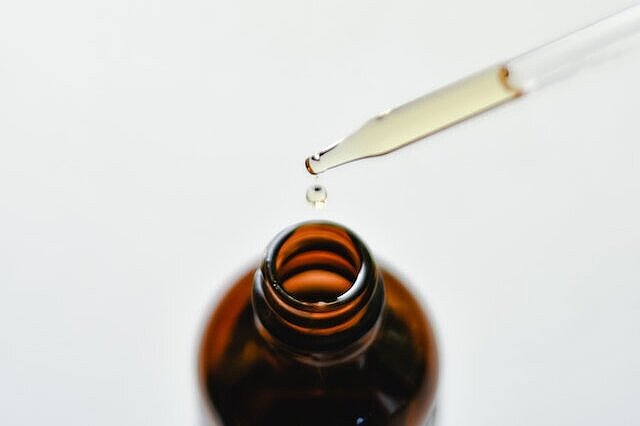2-propanol

What is 2-propanol?
2-Propanol is a colorless, highly flammable liquid with a pungent odor. It is an alcohol and has the chemical formula C3H8O. It can be produced from petroleum or propene. 2-Propanol has many applications in industry, medicine and in the household. For example, it is used to:
- Dissolve or dilute paints, varnishes, inks and adhesives
- Disinfect surfaces from bacteria, viruses and fungi
- Remove greases, oils, resins and waxes
- Clean electronic devices
- Produce antifreeze
- Denature alcoholic beverages
What are the benefits of 2-propanol for dogs?
2-Propanol can be useful for dogs in some situations. For example, it can help to:
- Disinfect wounds and prevent infection
- Clean ears and prevent ear infections
- Remove ticks by dabbing them with a cotton ball soaked in 2-propanol
- Clean paws and remove dirt
However, 2-propanol should only ever be used in small quantities and diluted. You should also make sure that the dog does not lick it off or inhale it.
What are the disadvantages of 2-propanol for dogs?
2-propanol can also be dangerous for dogs if they accidentally ingest it or get too much of it. The symptoms of 2-propanol poisoning can vary depending on the amount and type of ingestion. They can include, for example
- Vomiting
- diarrhea
- loss of appetite
- stomach pain
- shortness of breath
- cough
- Mucous membrane irritation
- Eye irritation
- drowsiness
- Coordination disorders
- tremors
- convulsions
- coma
- Death
The lethal dose of 2-propanol for dogs is around 5 ml per kg body weight. This means that even a small sip from a bottle can be fatal.
What should you do if your dog has ingested 2-propanol?
If you suspect that your dog has ingested 2-propanol, you should act immediately. Follow these steps:
- Move your dog away from the source and prevent further ingestion.
- Call your veterinarian or take your dog to the nearest veterinary clinic.
- Do not give your dog a vomit-inducing agent such as salt water or hydrogen peroxide, as this can make the situation worse.
- Also, do not give your dog water or milk as this can speed up the absorption of 2-propanol.
- Keep calm and watch your dog for symptoms of poisoning.
- Follow your vet's instructions.
How can you prevent 2-propanol poisoning in your dog?
The best way to avoid 2-propanol poisoning in your dog is prevention. You should:
- Always keep 2-propanol safe and out of your dog's reach
- Always use 2-propanol with caution and in well-ventilated areas
- Always keep 2-propanol away from your dog's skin, coat and mucous membranes
- Always remove 2-propanol immediately from surfaces that your dog could lick
- Always dispose of 2-propanol properly and do not allow it to enter the environment
2-Propanol is a useful substance, but it can also be dangerous for dogs. If you want to use 2-propanol for your dog, you should always adhere to the recommended dosages and application methods. If you suspect 2-propanol poisoning in your dog, you should contact a veterinarian immediately. If you use 2-propanol safely and responsibly, you can provide your dog with many benefits while sparing him many disadvantages.
Properties 3
Are you looking for other ingredients with a specific property?
Just click on them to find more.
If you notice any signs of hypersensitivity or poisoning in your dog, you should see your vet immediately. We are not a substitute for a vet, but we try to be as accurate as possible. Every dog reacts differently and we recommend you get a second opinion or consult your vet if in doubt.
Stay healthy and take good care of your four-legged friend!😊
Similar to 2-propanol
1-Propanol is an organic compound with the chemical formula CH3CH2CH2OH. It belongs to the alcohols and has a characteristic odor. It is a colorless liquid that is highly flammable and soluble in...
Chemical basics and use Methanol, also known as methyl alcohol, is a colorless liquid that is notable for its high volatility and characteristic odor. Chemically speaking, methanol is the simplest...
Butanols are organic compounds that have a hydroxyl group (-OH) attached to a carbon atom. They are alcohols, which play an important role in organic chemistry. Alcohols can be produced by various...
Ethanol can enter the dog's body in various ways. The most common route is oral ingestion, e.g. when the dog consumes alcohol-containing drinks, food or medication. Ethanol can also enter the dog's...



